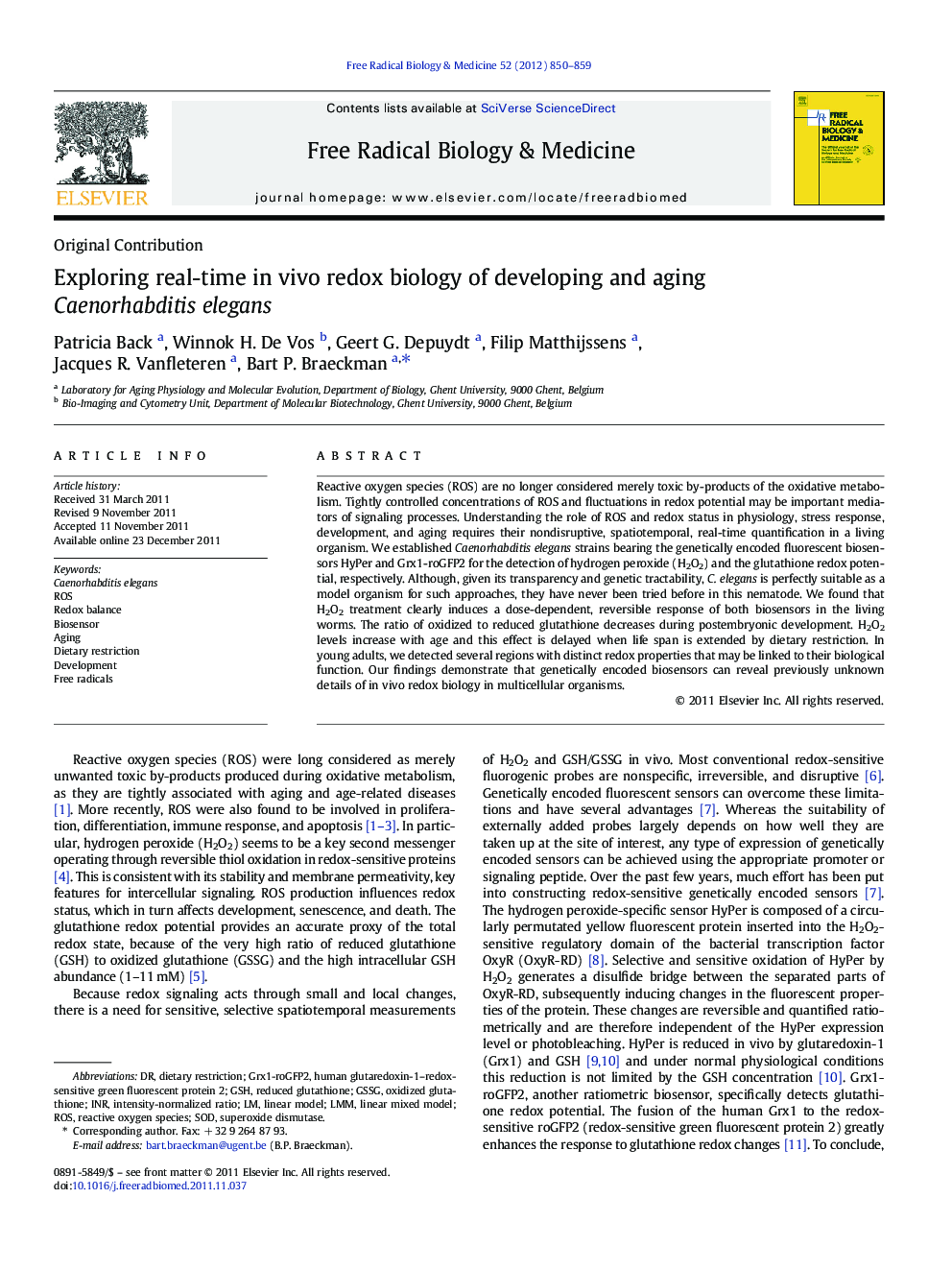| کد مقاله | کد نشریه | سال انتشار | مقاله انگلیسی | نسخه تمام متن |
|---|---|---|---|---|
| 1908605 | 1046673 | 2012 | 10 صفحه PDF | دانلود رایگان |

Reactive oxygen species (ROS) are no longer considered merely toxic by-products of the oxidative metabolism. Tightly controlled concentrations of ROS and fluctuations in redox potential may be important mediators of signaling processes. Understanding the role of ROS and redox status in physiology, stress response, development, and aging requires their nondisruptive, spatiotemporal, real-time quantification in a living organism. We established Caenorhabditis elegans strains bearing the genetically encoded fluorescent biosensors HyPer and Grx1-roGFP2 for the detection of hydrogen peroxide (H2O2) and the glutathione redox potential, respectively. Although, given its transparency and genetic tractability, C. elegans is perfectly suitable as a model organism for such approaches, they have never been tried before in this nematode. We found that H2O2 treatment clearly induces a dose-dependent, reversible response of both biosensors in the living worms. The ratio of oxidized to reduced glutathione decreases during postembryonic development. H2O2 levels increase with age and this effect is delayed when life span is extended by dietary restriction. In young adults, we detected several regions with distinct redox properties that may be linked to their biological function. Our findings demonstrate that genetically encoded biosensors can reveal previously unknown details of in vivo redox biology in multicellular organisms.
► Reactive oxygen species and redox status play roles in stress response, development, and aging.
► For the first time, in vivo sensors for H2O2 and GSSG/GSH are used in Caenorhabditis elegans.
► GSSG/GSH ratio decreases during development.
► H2O2 levels increase with age, and calorie restriction delays this effect.
► H2O2 levels are high in canal-associated neurons and GSSG/GSH levels are low in spermatheca.
Journal: Free Radical Biology and Medicine - Volume 52, Issue 5, 1 March 2012, Pages 850–859